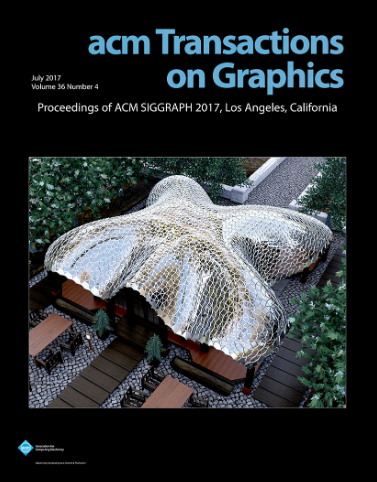PhysicsFC: Learning User-Controlled Skills for a Physics-Based Football Player Controller
IF 9.5
1区 计算机科学
Q1 COMPUTER SCIENCE, SOFTWARE ENGINEERING
引用次数: 0
Abstract
We propose PhysicsFC, a method for controlling physically simulated football player characters to perform a variety of football skills-such as dribbling, trapping, moving, and kicking-based on user input, while seamlessly transitioning between these skills. Our skill-specific policies, which generate latent variables for each football skill, are trained using an existing physics-based motion embedding model that serves as a foundation for reproducing football motions. Key features include a tailored reward design for the Dribble policy, a two-phase reward structure combined with projectile dynamics-based initialization for the Trap policy, and a Data-Embedded Goal-Conditioned Latent Guidance (DEGCL) method for the Move policy. Using the trained skill policies, the proposed football player finite state machine (PhysicsFC FSM) allows users to interactively control the character. To ensure smooth and agile transitions between skill policies, as defined in the FSM, we introduce the Skill Transition-Based Initialization (STI), which is applied during the training of each skill policy. We develop several interactive scenarios to showcase PhysicsFC's effectiveness, including competitive trapping and dribbling, give-and-go plays, and 11v11 football games, where multiple PhysicsFC agents produce natural and controllable physics-based football player behaviors. Quantitative evaluations further validate the performance of individual skill policies and the transitions between them, using the presented metrics and experimental designs.物理fc:学习用户控制的技能为物理为基础的足球运动员控制器
我们提出了PhysicsFC,这是一种控制物理模拟足球运动员角色的方法,可以根据用户输入来执行各种足球技能,比如盘带、捕捉、移动和踢球,同时在这些技能之间无缝转换。我们的技能特定策略为每个足球技能生成潜在变量,使用现有的基于物理的运动嵌入模型进行训练,该模型可作为再现足球运动的基础。主要特点包括:运球策略的量身定制奖励设计,陷阱策略的两阶段奖励结构与基于弹丸动态的初始化相结合,以及移动策略的数据嵌入目标条件潜制导(DEGCL)方法。使用经过训练的技能策略,所提出的足球运动员有限状态机(PhysicsFC FSM)允许用户交互式地控制角色。为了确保在FSM中定义的技能策略之间的平稳和敏捷转换,我们引入了基于技能转换的初始化(STI),该初始化在每个技能策略的训练过程中应用。我们开发了几个交互式场景来展示PhysicsFC的有效性,包括竞争性的诱捕和盘带、传球和跑动比赛,以及11v11足球游戏,其中多个PhysicsFC代理产生自然和可控的基于物理的足球运动员行为。定量评估进一步验证了个人技能政策的表现,以及它们之间的转换,使用了所提出的指标和实验设计。
本文章由计算机程序翻译,如有差异,请以英文原文为准。
求助全文
约1分钟内获得全文
求助全文
来源期刊

ACM Transactions on Graphics
工程技术-计算机:软件工程
CiteScore
14.30
自引率
25.80%
发文量
193
审稿时长
12 months
期刊介绍:
ACM Transactions on Graphics (TOG) is a peer-reviewed scientific journal that aims to disseminate the latest findings of note in the field of computer graphics. It has been published since 1982 by the Association for Computing Machinery. Starting in 2003, all papers accepted for presentation at the annual SIGGRAPH conference are printed in a special summer issue of the journal.
 求助内容:
求助内容: 应助结果提醒方式:
应助结果提醒方式:


